-
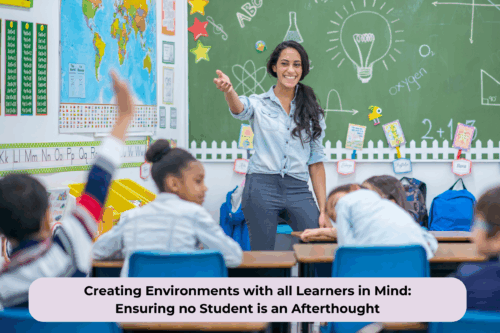 Time to move from skill-building to cultivating environments that promote individual and collective growth, so each student has the space to flourish. By utilizing trauma and community responsive approaches coupled with neurotype-responsive practices, we will explore how the design of classroom spaces, daily routines, and relationships can actively promote success for every learner. Participants will engage with frameworks that encourage intentional decision-making, reduce power struggles, and enhance emotional safety. Together, we will explore class wide frameworks that help students access "doses of regulation" throughout the day, anchoring their learning in self-awareness and self-advocacy. We will explore the question, “What does a regulatory environment look like?” to understand how such an environment feels, functions, and transforms interactions. Join this deep dive into really understanding what regulation is and isn't!
Time to move from skill-building to cultivating environments that promote individual and collective growth, so each student has the space to flourish. By utilizing trauma and community responsive approaches coupled with neurotype-responsive practices, we will explore how the design of classroom spaces, daily routines, and relationships can actively promote success for every learner. Participants will engage with frameworks that encourage intentional decision-making, reduce power struggles, and enhance emotional safety. Together, we will explore class wide frameworks that help students access "doses of regulation" throughout the day, anchoring their learning in self-awareness and self-advocacy. We will explore the question, “What does a regulatory environment look like?” to understand how such an environment feels, functions, and transforms interactions. Join this deep dive into really understanding what regulation is and isn't! -
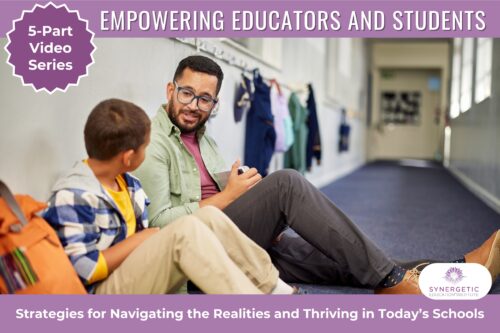 Empowering Educators and Students: Strategies for Navigating the Realities and Thriving in Today’s Schools is a 5-part video series. You can watch them all (already selected, just add to cart for your discount) or CLICK HERE to explore and purchase them individually. Should you want to watch the entire series, we recommend viewing them in this order:
Empowering Educators and Students: Strategies for Navigating the Realities and Thriving in Today’s Schools is a 5-part video series. You can watch them all (already selected, just add to cart for your discount) or CLICK HERE to explore and purchase them individually. Should you want to watch the entire series, we recommend viewing them in this order:- The Neurobiology of Preparing Brains and Bodies to Learn in the Classroom
- Creating a Felt Sense of Safety and Belonging in School Starts with the Brain
- The Classroom is a Nervous System: Working with Daily Regulation and Dysregulation Cycles
- The Process of Developing Self-regulation: Understanding the Missing Pieces
- Brain-aligned Strategies for Re-wiring Brains and Re-patterning Nervous Systems
-
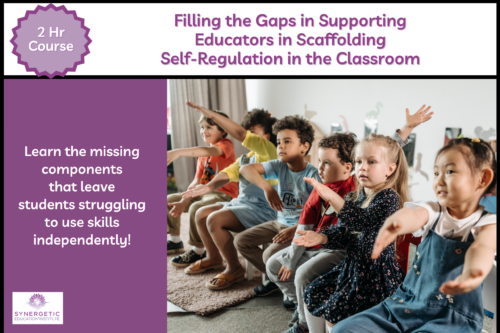
Join us for this 2-hour course as we identify and fill the gaps in supporting students and educators!
Educators are working harder than ever to teach social-emotional skills, yet many still feel frustrated when students struggle to apply what they've learned—especially when it comes to behavior and self-regulation. The reality? Most SEL programs are missing key components. Without the right scaffolding, students may understand self-regulation strategies in theory, but when big emotions hit, they can’t access or use them effectively. This can lead to a cycle of frustration for both educators and students. In this live, interactive training, we’ll uncover what’s missing and how mental health professionals can support educators in making simple but powerful shifts that integrate intentionally developing self-regulation skills daily in the classroom.
What You’ll Learn:
✔️ The hidden gaps in many SEL programs that prevent students from self-regulating.
✔️ How to scaffold self-regulation skills so students can apply strategies independently—even in moments of stress.
✔️ Small, practical shifts educators can make in their daily routines that lead to lasting behavior change.
Who Should Attend? This training is designed for school-based and clinical mental health professionals who support educators and students. Whether you work directly in schools or in private practice, you’ll leave with insights and tools you can use immediately to help educators bridge the gap between teaching self-regulation and students actually using it when they need it most.
💡 Join us and learn how to make self-regulation easier—not harder—for both students and educators.
-
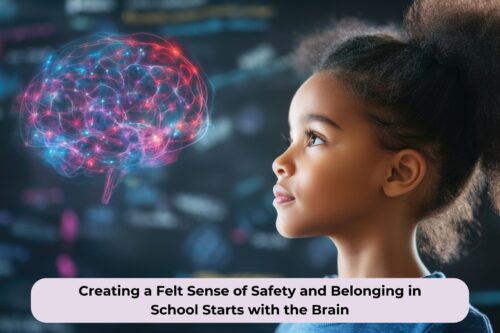 Safety and belonging start with the brain! Creating a safe and welcoming environment is the foundation of classroom culture and community and is crucial for academic success and overall well-being. We spend so much time creating beautiful classrooms, however, providing students with a sense of security can be challenging if we don't understand how the brain perceives safety and threats. You cannot talk someone into feeling safe. Learn to use approaches that foster a sense of safety, nurture trust and belonging, and support students in approaching challenges with curiosity instead of fear as they learn that they can manage to do things that are difficult.
Safety and belonging start with the brain! Creating a safe and welcoming environment is the foundation of classroom culture and community and is crucial for academic success and overall well-being. We spend so much time creating beautiful classrooms, however, providing students with a sense of security can be challenging if we don't understand how the brain perceives safety and threats. You cannot talk someone into feeling safe. Learn to use approaches that foster a sense of safety, nurture trust and belonging, and support students in approaching challenges with curiosity instead of fear as they learn that they can manage to do things that are difficult. -
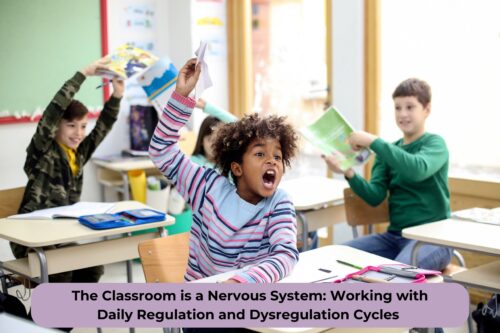 Discover the true importance of regulation and how it's often misunderstood. Don't let regulation be just another buzzword in your vocabulary. Join Judy to explore how regulation and dysregulation cycles affect students and adults throughout the day. Learn how finding moments of regulation in the midst of dysregulation can be a powerful tool in improving your well-being and shifting students’ behaviors. By gaining a deeper understanding of how dysregulation is a natural part of everyday life, we can recognize important clues for supporting students in becoming aware of their own activation and learning effective strategies through challenging moments. Apply this understanding to class-wide activation. Viewing the class as a collective nervous system gives you the ability to support entire groups of students at the same time, without burning out your own nervous system. Empower yourself and your students!
Discover the true importance of regulation and how it's often misunderstood. Don't let regulation be just another buzzword in your vocabulary. Join Judy to explore how regulation and dysregulation cycles affect students and adults throughout the day. Learn how finding moments of regulation in the midst of dysregulation can be a powerful tool in improving your well-being and shifting students’ behaviors. By gaining a deeper understanding of how dysregulation is a natural part of everyday life, we can recognize important clues for supporting students in becoming aware of their own activation and learning effective strategies through challenging moments. Apply this understanding to class-wide activation. Viewing the class as a collective nervous system gives you the ability to support entire groups of students at the same time, without burning out your own nervous system. Empower yourself and your students! -
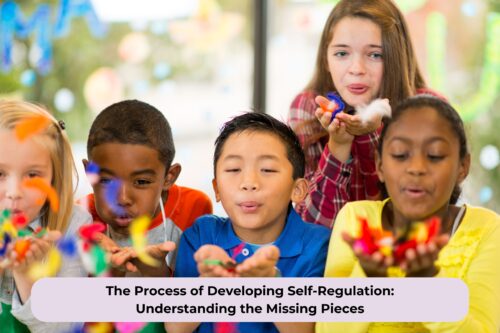 It can be frustrating when we teach students certain skills, and they don't seem to use them. This is especially true when it comes to behavior, and it's easy to assume that students are intentionally being defiant. However, what if we told you that much of the social-emotional learning programming and teaching lacks important components? These missing pieces make it difficult for students to use strategies independently. The good news is that we can incorporate these vital elements by making only small shifts to daily routines! Learn a framework for using whole-brain approaches that includes teaching specific skills and developing capacities that result in students being able to determine and apply strategies that work for them. We can provide students with the tools they need to succeed both academically and socially, by scaffolding the development of the skills they need to take responsibility for their own behaviors.
It can be frustrating when we teach students certain skills, and they don't seem to use them. This is especially true when it comes to behavior, and it's easy to assume that students are intentionally being defiant. However, what if we told you that much of the social-emotional learning programming and teaching lacks important components? These missing pieces make it difficult for students to use strategies independently. The good news is that we can incorporate these vital elements by making only small shifts to daily routines! Learn a framework for using whole-brain approaches that includes teaching specific skills and developing capacities that result in students being able to determine and apply strategies that work for them. We can provide students with the tools they need to succeed both academically and socially, by scaffolding the development of the skills they need to take responsibility for their own behaviors. -
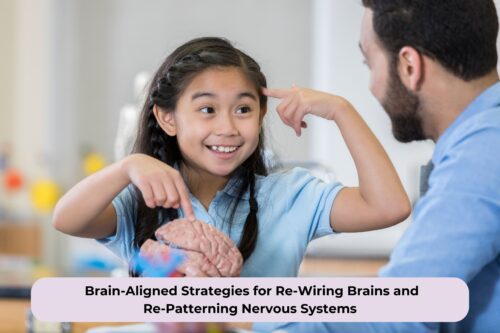 When strategies that have always worked in the past, are not working, it’s frustrating! In fact, sometimes our responses even seem to make the situation worse. What’s going on? When we learn to identify brain and body states it facilitates using the right strategy at the right time, including understanding why something might work in one moment and not another. When students aren’t in the higher regions of their brains, some strategies meant to support them, actually create escalation. Learn critical classroom strategies that work with students during varying states of arousal, expanding windows of tolerance and getting students back to places of learning. Strengthen your ability to help students grow their capacity for dealing with stress and challenges in and out of the classroom as you support creating new options for behavior.
When strategies that have always worked in the past, are not working, it’s frustrating! In fact, sometimes our responses even seem to make the situation worse. What’s going on? When we learn to identify brain and body states it facilitates using the right strategy at the right time, including understanding why something might work in one moment and not another. When students aren’t in the higher regions of their brains, some strategies meant to support them, actually create escalation. Learn critical classroom strategies that work with students during varying states of arousal, expanding windows of tolerance and getting students back to places of learning. Strengthen your ability to help students grow their capacity for dealing with stress and challenges in and out of the classroom as you support creating new options for behavior. -
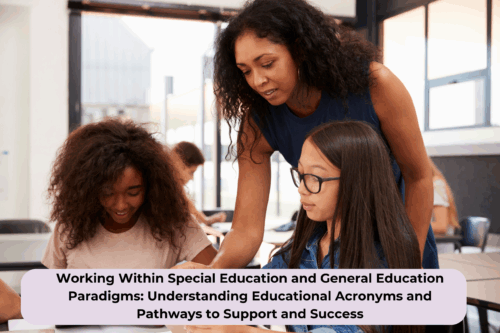 It is time to integrate the valuable insights and trauma-informed, community responsive approaches with the laws and mandates governing behavioral health. First, we will clarify the alphabet soup of educational acronyms as we examine the hierarchy of laws and rights that guide our work in implementing behavioral health in education while ensuring compliance with special education regulations. Next, we will discuss the importance of federal rights and how they are applied specifically in the state of Colorado, including a comparison of Individualized Education Programs (IEPs) and Section 504 plans to highlight educators' responsibilities in each case. We will also explore pathways to support and success by learning about the Child Find process, with a focus on the obligations of educators. Additionally, we will explore the intersection of Multi-Tiered Systems of Support (MTSS) and special education identification, as well as some criteria that determine a student’s eligibility for special education services. Join us to learn how to stay compliant without losing the heart of education!
It is time to integrate the valuable insights and trauma-informed, community responsive approaches with the laws and mandates governing behavioral health. First, we will clarify the alphabet soup of educational acronyms as we examine the hierarchy of laws and rights that guide our work in implementing behavioral health in education while ensuring compliance with special education regulations. Next, we will discuss the importance of federal rights and how they are applied specifically in the state of Colorado, including a comparison of Individualized Education Programs (IEPs) and Section 504 plans to highlight educators' responsibilities in each case. We will also explore pathways to support and success by learning about the Child Find process, with a focus on the obligations of educators. Additionally, we will explore the intersection of Multi-Tiered Systems of Support (MTSS) and special education identification, as well as some criteria that determine a student’s eligibility for special education services. Join us to learn how to stay compliant without losing the heart of education! -
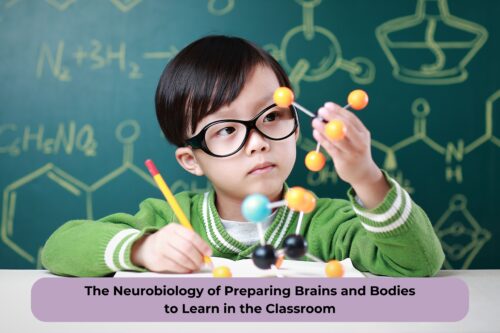 Even highly skilled educators need help to be effective when students are not ready to learn. Stress and anxiety influence daily school life academically and behaviorally, as these impact processing capabilities in the brain, creating dysregulation… And, dysregulation is contagious, growing from one to two students to entire classrooms. You can see the problem if what we’ve been trained to do is ignore certain behaviors. Neuroscience can help us understand what is happening for educators and students in moments of dysregulation and help us learn to recognize when students are not in brain or body states conducive to learning. This is the first step in understanding how to prepare brains and bodies to learn by providing clues about what is needed and what support will move students back to a place of learning.
Even highly skilled educators need help to be effective when students are not ready to learn. Stress and anxiety influence daily school life academically and behaviorally, as these impact processing capabilities in the brain, creating dysregulation… And, dysregulation is contagious, growing from one to two students to entire classrooms. You can see the problem if what we’ve been trained to do is ignore certain behaviors. Neuroscience can help us understand what is happening for educators and students in moments of dysregulation and help us learn to recognize when students are not in brain or body states conducive to learning. This is the first step in understanding how to prepare brains and bodies to learn by providing clues about what is needed and what support will move students back to a place of learning. -
 Safety and belonging start with the brain! Creating a safe and welcoming environment is the foundation of classroom culture and community and is crucial for academic success and overall well-being. We spend so much time creating beautiful classrooms, however, providing students with a sense of security can be challenging if we don't understand how the brain perceives safety and threats. You cannot talk someone into feeling safe. Learn to use approaches that foster a sense of safety, nurture trust and belonging, and support students in approaching challenges with curiosity instead of fear as they learn that they can manage to do things that are difficult.
Safety and belonging start with the brain! Creating a safe and welcoming environment is the foundation of classroom culture and community and is crucial for academic success and overall well-being. We spend so much time creating beautiful classrooms, however, providing students with a sense of security can be challenging if we don't understand how the brain perceives safety and threats. You cannot talk someone into feeling safe. Learn to use approaches that foster a sense of safety, nurture trust and belonging, and support students in approaching challenges with curiosity instead of fear as they learn that they can manage to do things that are difficult. -
 Discover the true importance of regulation and how it's often misunderstood. Don't let regulation be just another buzzword in your vocabulary. Join Judy to explore how regulation and dysregulation cycles affect students and adults throughout the day. Learn how finding moments of regulation in the midst of dysregulation can be a powerful tool in improving your well-being and shifting students’ behaviors. By gaining a deeper understanding of how dysregulation is a natural part of everyday life, we can recognize important clues for supporting students in becoming aware of their own activation and learning effective strategies through challenging moments. Apply this understanding to class-wide activation. Viewing the class as a collective nervous system gives you the ability to support entire groups of students at the same time, without burning out your own nervous system. Empower yourself and your students!
Discover the true importance of regulation and how it's often misunderstood. Don't let regulation be just another buzzword in your vocabulary. Join Judy to explore how regulation and dysregulation cycles affect students and adults throughout the day. Learn how finding moments of regulation in the midst of dysregulation can be a powerful tool in improving your well-being and shifting students’ behaviors. By gaining a deeper understanding of how dysregulation is a natural part of everyday life, we can recognize important clues for supporting students in becoming aware of their own activation and learning effective strategies through challenging moments. Apply this understanding to class-wide activation. Viewing the class as a collective nervous system gives you the ability to support entire groups of students at the same time, without burning out your own nervous system. Empower yourself and your students! -
 It can be frustrating when we teach students certain skills, and they don't seem to use them. This is especially true when it comes to behavior, and it's easy to assume that students are intentionally being defiant. However, what if we told you that much of the social-emotional learning programming and teaching lacks important components? These missing pieces make it difficult for students to use strategies independently. The good news is that we can incorporate these vital elements by making only small shifts to daily routines! Learn a framework for using whole-brain approaches that includes teaching specific skills and developing capacities that result in students being able to determine and apply strategies that work for them. We can provide students with the tools they need to succeed both academically and socially, by scaffolding the development of the skills they need to take responsibility for their own behaviors.
It can be frustrating when we teach students certain skills, and they don't seem to use them. This is especially true when it comes to behavior, and it's easy to assume that students are intentionally being defiant. However, what if we told you that much of the social-emotional learning programming and teaching lacks important components? These missing pieces make it difficult for students to use strategies independently. The good news is that we can incorporate these vital elements by making only small shifts to daily routines! Learn a framework for using whole-brain approaches that includes teaching specific skills and developing capacities that result in students being able to determine and apply strategies that work for them. We can provide students with the tools they need to succeed both academically and socially, by scaffolding the development of the skills they need to take responsibility for their own behaviors. -
 When strategies that have always worked in the past, are not working, it’s frustrating! In fact, sometimes our responses even seem to make the situation worse. What’s going on? When we learn to identify brain and body states it facilitates using the right strategy at the right time, including understanding why something might work in one moment and not another. When students aren’t in the higher regions of their brains, some strategies meant to support them, actually create escalation. Learn critical classroom strategies that work with students during varying states of arousal, expanding windows of tolerance and getting students back to places of learning. Strengthen your ability to help students grow their capacity for dealing with stress and challenges in and out of the classroom as you support creating new options for behavior.
When strategies that have always worked in the past, are not working, it’s frustrating! In fact, sometimes our responses even seem to make the situation worse. What’s going on? When we learn to identify brain and body states it facilitates using the right strategy at the right time, including understanding why something might work in one moment and not another. When students aren’t in the higher regions of their brains, some strategies meant to support them, actually create escalation. Learn critical classroom strategies that work with students during varying states of arousal, expanding windows of tolerance and getting students back to places of learning. Strengthen your ability to help students grow their capacity for dealing with stress and challenges in and out of the classroom as you support creating new options for behavior.

